
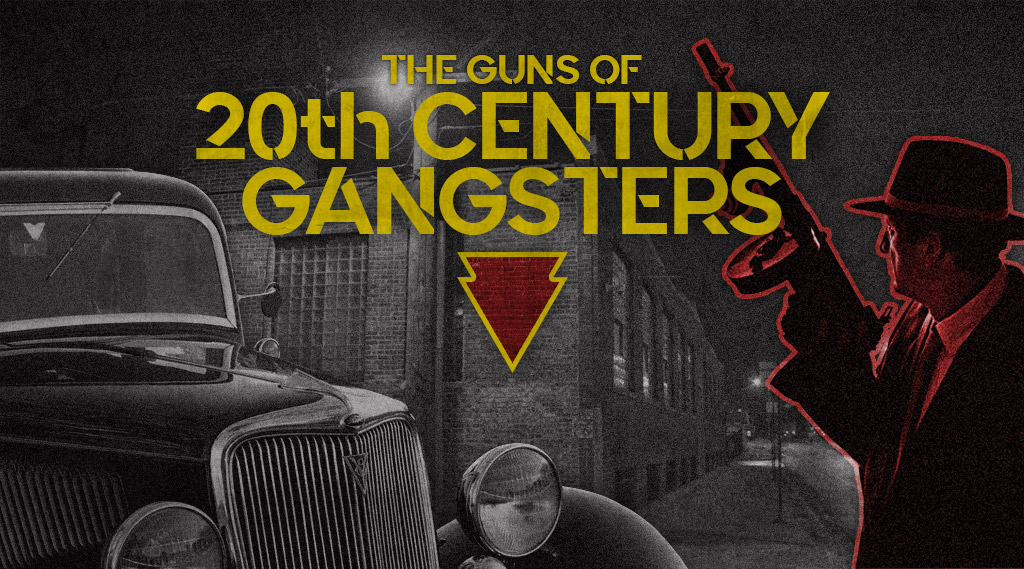
Mob Weapons
Most Americans have gained their knowledge of early-twentieth-century gangster guns from TV shows and movies. Those of us who watched The Untouchables on television in the late 50s and early 60s sat enthralled as Special Agent Eliot Ness chased down the Capone mob in one episode after another. Later, in a 1987 film, Kevin Costner took on the role of Ness and helped to send Robert De Niro’s version of Al Capone to prison.
Do you remember a film from 1967, The St. Valentine’s Day Massacre, in which Capone orders his men to disguise themselves as police officers? The fake cops line up seven members of rival George “Bugs” Moran’s gang against a garage wall and mow them down with machine guns.
There are many other examples of shows and movies that were loosely based on real events. They all have two things in common: the events were not always presented accurately and there were plenty of guns involved.
Historians will be the first to tell you that history is anything but an exact science. It’s a moving target that changes with additional research and the information gleaned from it. The history of gangsters is no different. Much of it was romanticized, and it was often sensationalized to help sell newspapers, books, and movie theater tickets.
So, here are some of the infamous historical figures from the 20s, 30s, and 40s whose trademarks were terror and violence, along with the guns they used to provide it.
It’s only fitting that we begin with the all-time king of crime:
Al “Scarface” Capone’s Gun
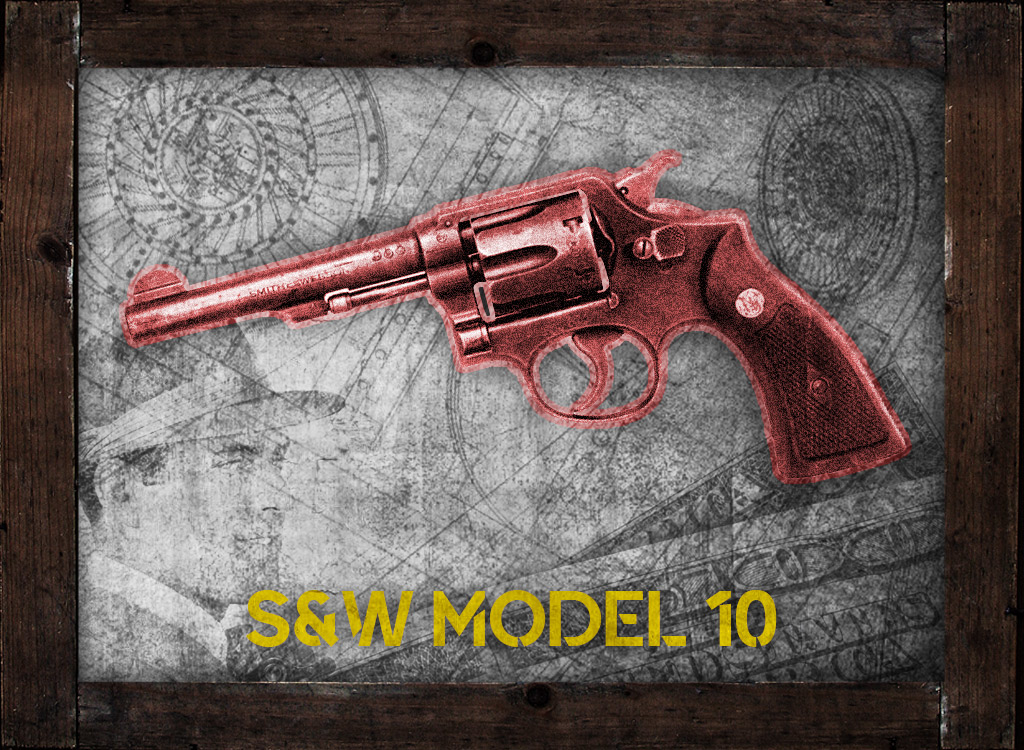
The Smith & Wesson Model 10, commonly chambered in .38 special, was a favorite sidearm of gangsters and lawmen alike.
Alphonse Capone was born on January 17, 1899, in Brooklyn, New York. He would grow up to be America’s most famous gangster, controlling organized crime throughout Chicago from 1925 to 1931. After quitting school at the age of 14, Capone worked a series of odd jobs before becoming involved with several youth gangs.
Within two years he would graduate from petty crimes when he began working for future crime boss Johnny Torrio. It was while working for one of Torrio’s associates in a brothel-saloon that Capone was slashed across his cheek with a razor for making a crude comment about another hoodlum’s sister—hence, the nickname “Scarface.”
What Did Al Capone Do?
As Capone moved up through the mobster ranks, he was tied to several brutal acts and even murder. It wasn’t until Torrio went to prison and he became crime boss of Chicago that Capone’s violent tendencies escalated. While handling prostitution, gambling, and bootlegging in the city, Capone expanded his territories by gunning down his rivals, all of which went unpunished.
While his most notorious blood-letting, the St. Valentine’s Day massacre, was staged in 1929. It was a conviction for possessing a concealed handgun that sent him to a Philadelphia prison for ten months that same year.
Al Capone’s luck ran out in 1931 when Capone was indicted on 22 counts of federal income-tax evasion and found guilty of three. He was sentenced to 11 years in prison and fined $50,000.
Al Capone’s Death
Ravaged by late-stage syphilis, Capone was released from prison in 1939, eventually retiring to his Florida estate. He died there in 1947 from heart failure.
One of Al Capone’s legacies is the pistol he preferred: a Smith & Wesson .38-caliber Model 10 revolver. One such weapon was reportedly taken from him during a 1928 arrest in Miami. It spent some time on display at The Mob Museum in Las Vegas recently.
The revolver, manufactured in 1925 and shipped from the Smith & Wesson factory, was sold by Wolf & Klar Company, a gun dealer located in Fort Worth, Texas. Wolf & Klar was famous for installing pearl grips on the revolvers it sold, which could explain why a flashy gangster might be drawn to it. Capone is said to have purchased the gun because he felt he needed extra firepower for protection.
George “Machine Gun” Kelly

Chambered in .45 ACP, the Thompson submachine gun has seen combat in more than a dozen wars since 1918.
You’ve likely heard it more than once: Behind every successful man is a strong woman. Although that isn’t always true, in the case of George “Machine Gun” Kelly, it was a woman who propelled him from a small-time criminal to one of the most famous gangsters from the prohibition era.
George Kelly Barnes was born on July 18, 1895, to a prosperous family from Memphis, Tennessee. While his childhood was traditional and uneventful, Kelly’s troubles started in 1917 while he studied agriculture at Mississippi State University. Poor grades and problems with various faculty members resulted in him quitting school and marrying a young woman named Geneva Ramsey. But low wages and long hours as a cab driver put a strain on the marriage. By the time he had turned nineteen, he was out of work and separated from his wife and two children.
It was around this time that Kelly started working with a small-time hoodlum and began bootlegging. He enjoyed both the financial rewards and the notoriety of his new work. But after being arrested for illegal trafficking, Kelly thought it best to leave Memphis. He headed west with a new girlfriend and began to earn a reputation as a veteran gangster, having survived a host of jail and prison stays.
Doing Time In The Pen
After finishing up a sentence at the State Penitentiary in New Mexico, Kelly moved to Oklahoma City where he met Kathryn Thorne, a shady character in her own right. Thorne came from a family of outlaws. She had already been arrested for robbery, prostitution, and a few other offenses. The two were married in September of 1930.
Many historians believe that it was Thorne who created the image that would become “Machine Gun Kelly.” They are also convinced that she planned several successful bank robberies that Kelly committed in Texas and Mississippi. A 1933 FBI wanted poster described Kelly as an “Expert Machine Gunner.” This helped to cement his standing among his gangster brethren.
How Did Machine Gun Kelly Die?
After the seemingly successful kidnapping of a businessman in 1933, Kelly, Thorne, and the rest of their gang was eventually captured, convicted, and sent to prison. George “Machine Gun” Kelly died of a heart attack in Leavenworth on July 18, 1954. It was his 59th birthday.
George Kelly earned a much-deserved dark reputation for the life he led. Unfortunately, he also tainted the name of the Thompson M1921/M1928 “Tommy Gun” submachine gun, although it later recovered its prestige by performing admirably on the battlefields of World War II, Korea, and Vietnam.
John Dillinger’s Gun
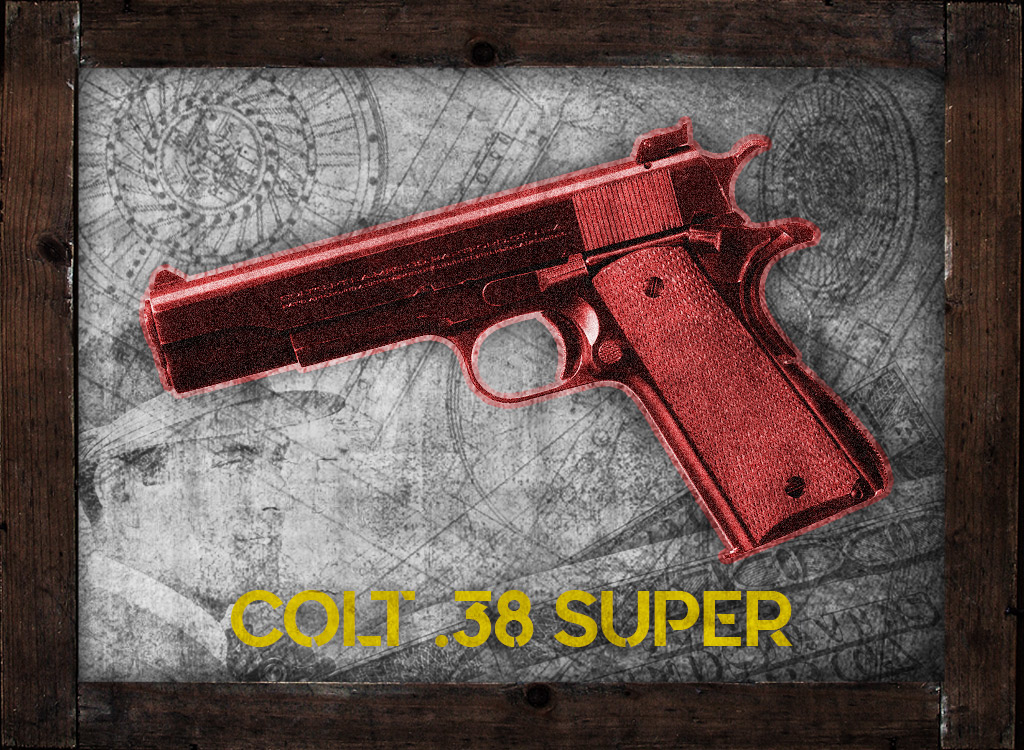
John Dillinger favored the high capacity of the Colt .38 Super, legend has it he had a gunsmith modify his pistol to shoot full auto with extended magazines and a Thompson fore-grip.
“My buddies wanted to be firemen, farmers, or policemen, something like that. Not me; I just wanted to steal people’s money!” –John Dillinger
If nothing else, the charismatic gangster was honest about his intentions. And he followed through with twelve bank robberies between 1933 and ’34, stealing more than $300,000 in the process.
Born in 1903 in a middle-class residential neighborhood in Indianapolis, John Herbert Dillinger was often in trouble during adolescence. His mother died when he was three, and he resented and disliked his new stepmother.
When he was 20 years old, Dillinger stole a car and took an extended joyride through Indianapolis. His criminal career was off and running. After being caught and nearly shot, he enlisted in the Navy to avoid being arrested. His time in the military was brief. Dillinger deserted in 1923 and was eventually given a dishonorable discharge.
Dillinger and his violent gang terrorized the Midwest starting in 1933. They were responsible for the deaths of ten men while wounding seven others. After robbing several banks and police arsenals, and staging three jailbreaks, Dillinger was named America’s first “Public Enemy Number One” by the FBI.
How Did John Dillinger Die?
Dillinger was shot and killed by the FBI as he exited Chicago’s Biograph Theater on July 22, 1934. His friend, Anna Sage, had betrayed him to the FBI. In return for her cooperation, she avoided deportation to her home country of Romania. Sage would forever be known as the “Woman in Red” because of the dress she wore that evening.
Although he was never convicted of killing anyone, John Dillinger was known to have carried a variety of weapons during his relatively short (but very productive) criminal career. One of his favorites was the Colt .38 Super Automatic with a 22-round magazine, but it was a Model 1908 Vest Pocket single-action pistol that he reportedly drew before being gunned down in that Chicago alley. He was thirty-one years old.
“Baby Face” Nelson’s Gun of Choice
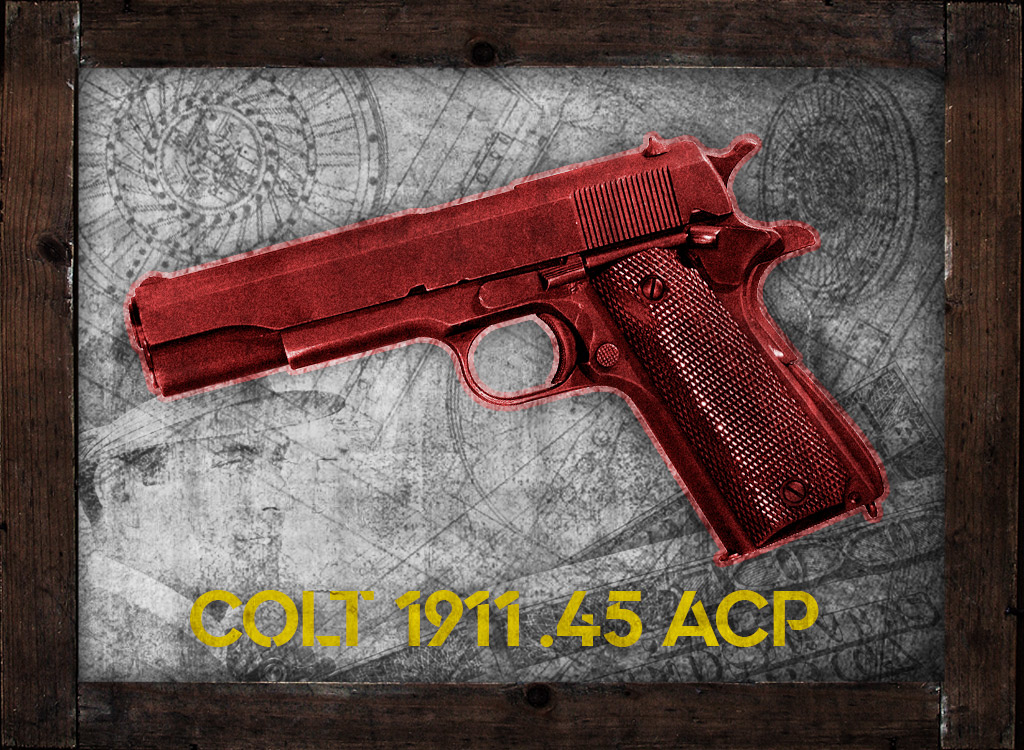
The Colt 1911 provides magnum firepower, something a gangster like “Baby Face” Nelson desperately needed during shootouts with law enforcement.
Soon after John Dillinger was shot and killed by FBI agents, J. Edgar Hoover announced that “Baby Face” Nelson would now replace him as “Public Enemy Number One.” That seemed fitting since Nelson had participated in robberies with Dillinger and his gang in 1934.
Nelson was born Lester Joseph Gillis in Chicago, Illinois, on December 6, 1908. He began building his criminal resume at 13 years old and did his first stint in jail when he was 14. Nelson started out stealing cars, bootlegging, and committing armed robberies. It wasn’t long until the youthful-looking hoodlum had also become a ruthless killer.
In 1930, Nelson and his partners-in-crime raided the home of a wealthy magazine owner. They came away with jewelry that would be worth about $3 million in today’s dollars. Later that same year, they stole about $18,000 worth of jewelry from the wife of Bill Thompson, the mayor of Chicago!
In partnership with Dillinger, Nelson completed a series of extremely profitable bank robberies. Unlike Dillinger, however, Nelson was unusually fond of senseless bloodshed. Writer Richard Lindberg describes Nelson: “Standing only five feet four inches, Gillis (Nelson) compensated for his physical limitations with a murderous temper and a willingness to employ a switchblade or a gun without hesitation or remorse for the intended victim.”
How did Baby Face Nelson Die?
In the early afternoon hours of November 27, 1934, FBI agents spotted Nelson in a stolen car with his wife, Helen Gillis, and long-time friend John Paul Chase. The Chicago office of the FBI received word of the trio and sent three agents to find Nelson’s car.
Within an hour, the agents caught sight of Nelson. During a firefight, one of the agents managed to shoot a hole in the radiator of Nelson’s car. Nelson pulled off the road, and the agents stopped about 150 feet away. Nelson and Chase fired on the agents with automatic weapons before they could exit their car, killing one and mortally wounding another. Nelson’s wife was not hurt.
During the battle, Nelson was hit seventeen times but managed to escape with Chase’s help. He died that evening in Wilmette, Illinois at the age of 25.
Except for military battles, the gunfight between these two FBI agents and two desperate gangsters may have been the most violent firefight on American soil. Three of the men had automatic weapons, while the fourth used a short-barreled, semi-automatic 12-gauge riot gun. Nelson also used a Colt M1911A1 in .45 ACP. Plus, there were other handguns, including a Colt .38 Super Automatic, found at the scene.
“Pretty Boy” Floyd
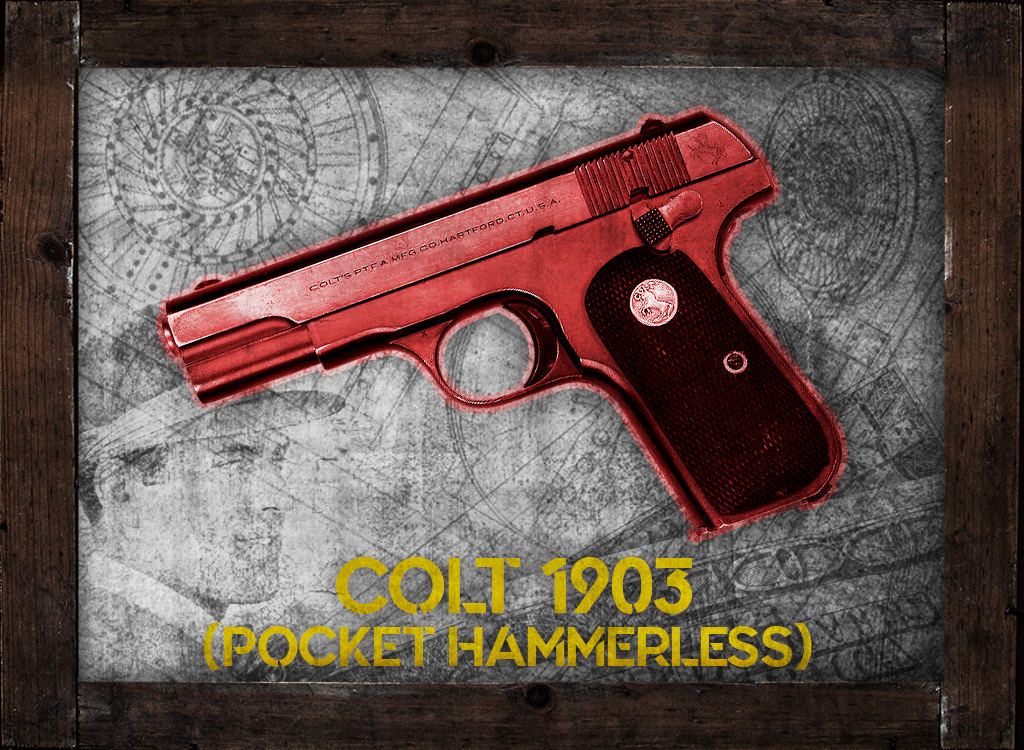
The Colt 1903 Pocket Hammerless, it’s size and ammo capacity made it a favorite of bank robbers and gangsters alike.
There are several versions of how Charles Floyd picked up his nickname, but the most likely one comes from his youth. His neighbors gave him the moniker because he was constantly grooming his hair and was meticulous about his clothes. The fact that he was attractive and friendly also made an impression. But no matter the source of his nickname, Floyd hated it and spent his short life trying to shake it.
Charles Floyd was born in Georgia in 1904 but grew up on an Oklahoma farm that his parents bought a few years after his birth. Like most Midwest farmers of the early 20th century, his family was dreadfully poor. Floyd grew impatient of living in poverty and turned to crime. His first arrest, at the age of 18, was for robbing a local post office of $3.50 in coins.
In 1925, Floyd began a four-year stretch in Missouri Penitentiary for his part in a payroll robbery. While there, he sold drugs and assaulted guards. And when he was released in 1929, he set his sights on robbing several rural banks with the help of his Colt 1903 .32 Automatic Pistol. But it was Floyd’s involvement in the so-called “Kansas City Massacre” that catapulted him to fame—and a top spot on the FBI’s Most Wanted List.
The firefight started when Floyd and two other hoodlums, Vernon Miller and Adam Richetti, attempted to free their friend, Frank Nash, who was being escorted back to Leavenworth Prison. Four law enforcement officers were killed during the confrontation. Nash was also killed, he was shot in the head accidentally by his potential rescuers.
Pretty Boy Floyd’s Death
Not surprisingly, Pretty Boy Floyd died in a hail of bullets from a Thompson machine gun used by FBI agents. There are multiple versions of the details of his death, but all agree that Floyd died in a rural area near East Liverpool, Ohio, on October 22, 1934.
Tens of thousands attended Floyd’s funeral. He was thirty years old.
Gangster Guns: A History Of Violence
Crime doesn’t pay. It’s an overused phrase but true nonetheless. Of the gangsters mentioned here, only “Machine Gun” Kelly died of natural causes at the ripe old age of 59—in prison.
These criminals used a variety of notorious weapons to spread terror. Many of them and their cohorts died violent deaths by the same types of guns they themselves used indiscriminately.
While most of their lives were brief, their infamy has survived well into the next century. For some, their deeds expanding into folk hero status. But the suffering they caused is anything but heroic, and their deeds leave a dark cloud over the history of the mid-west in the 1920s, the 30s, and 40s.


